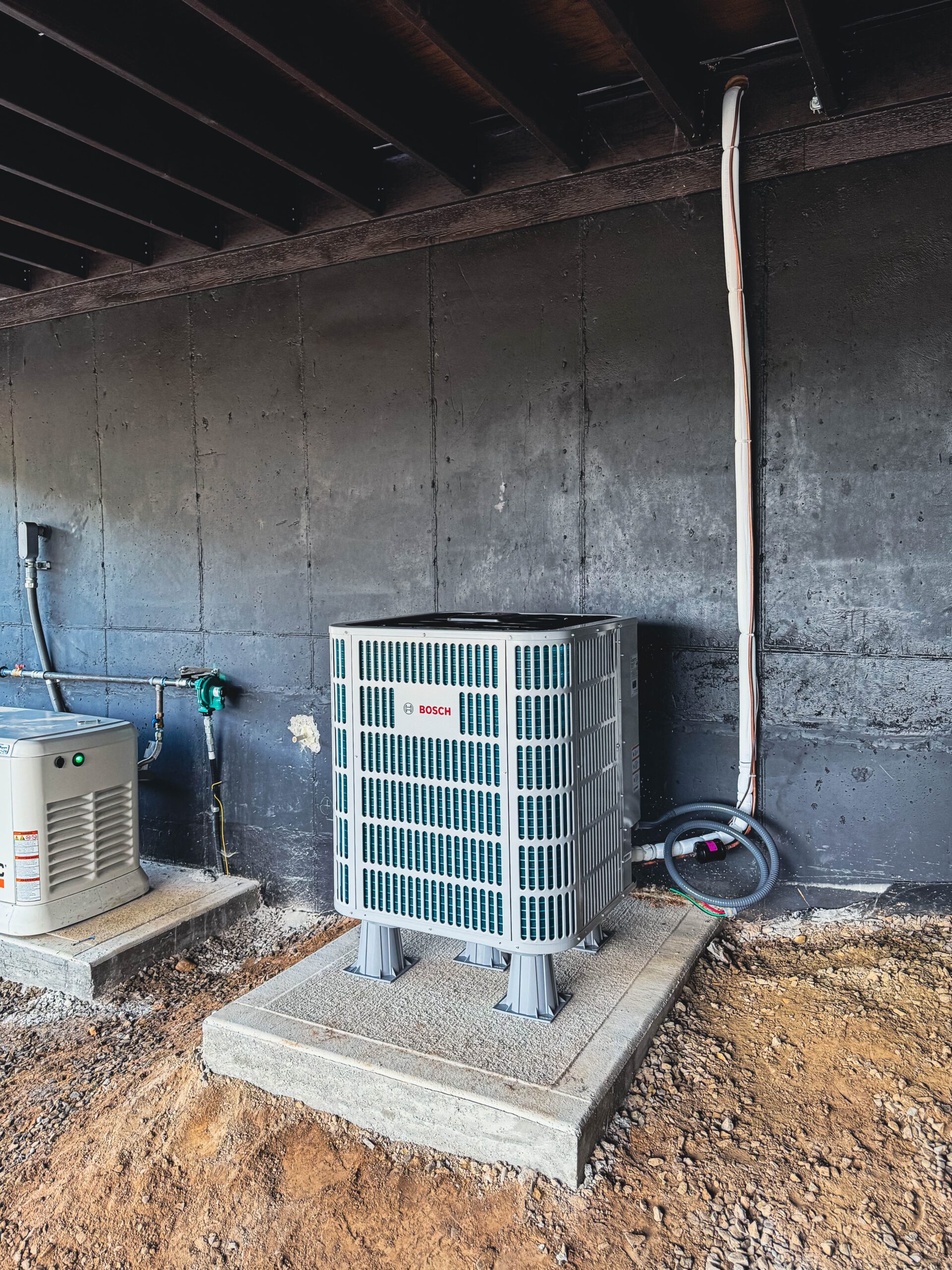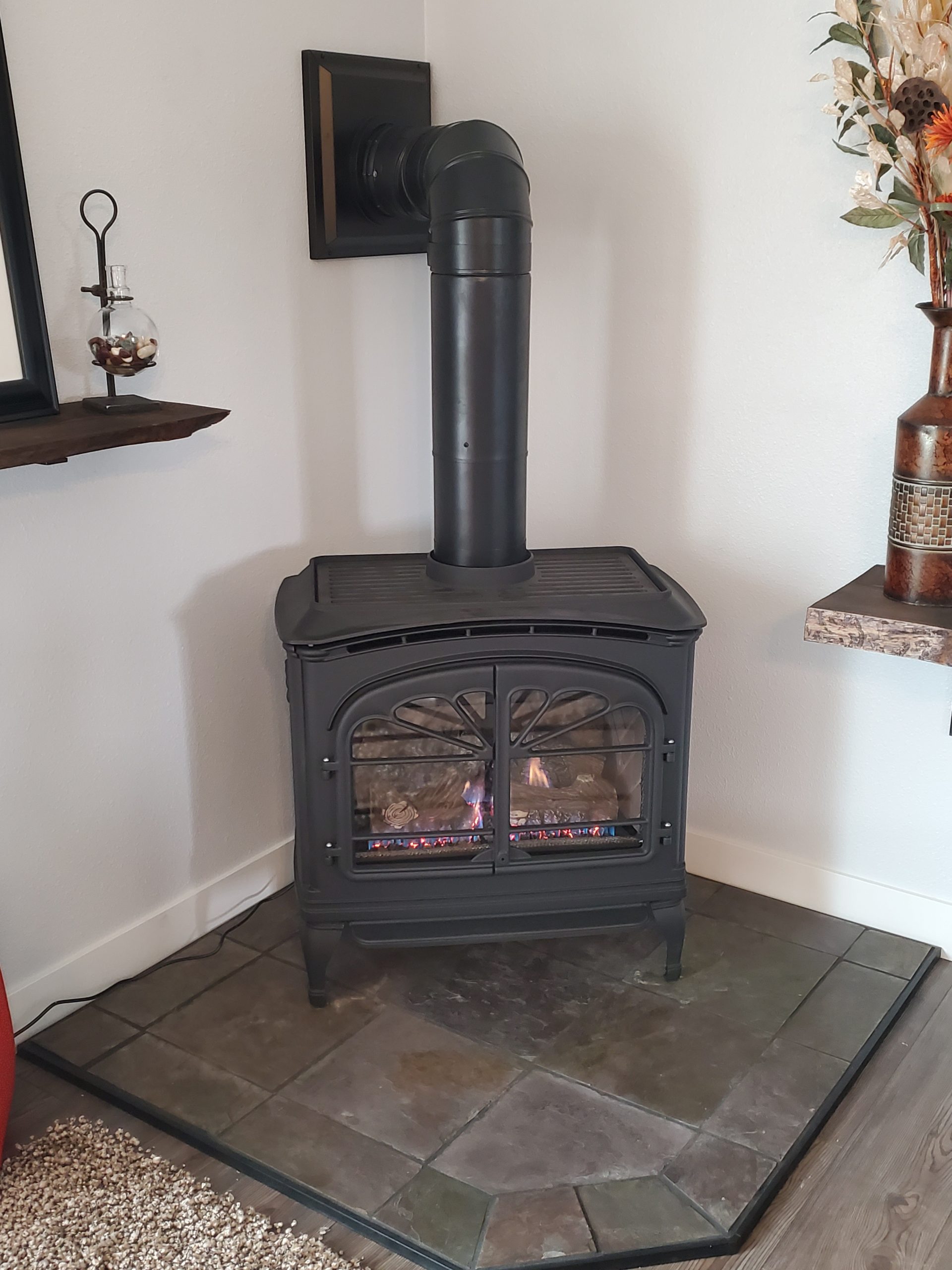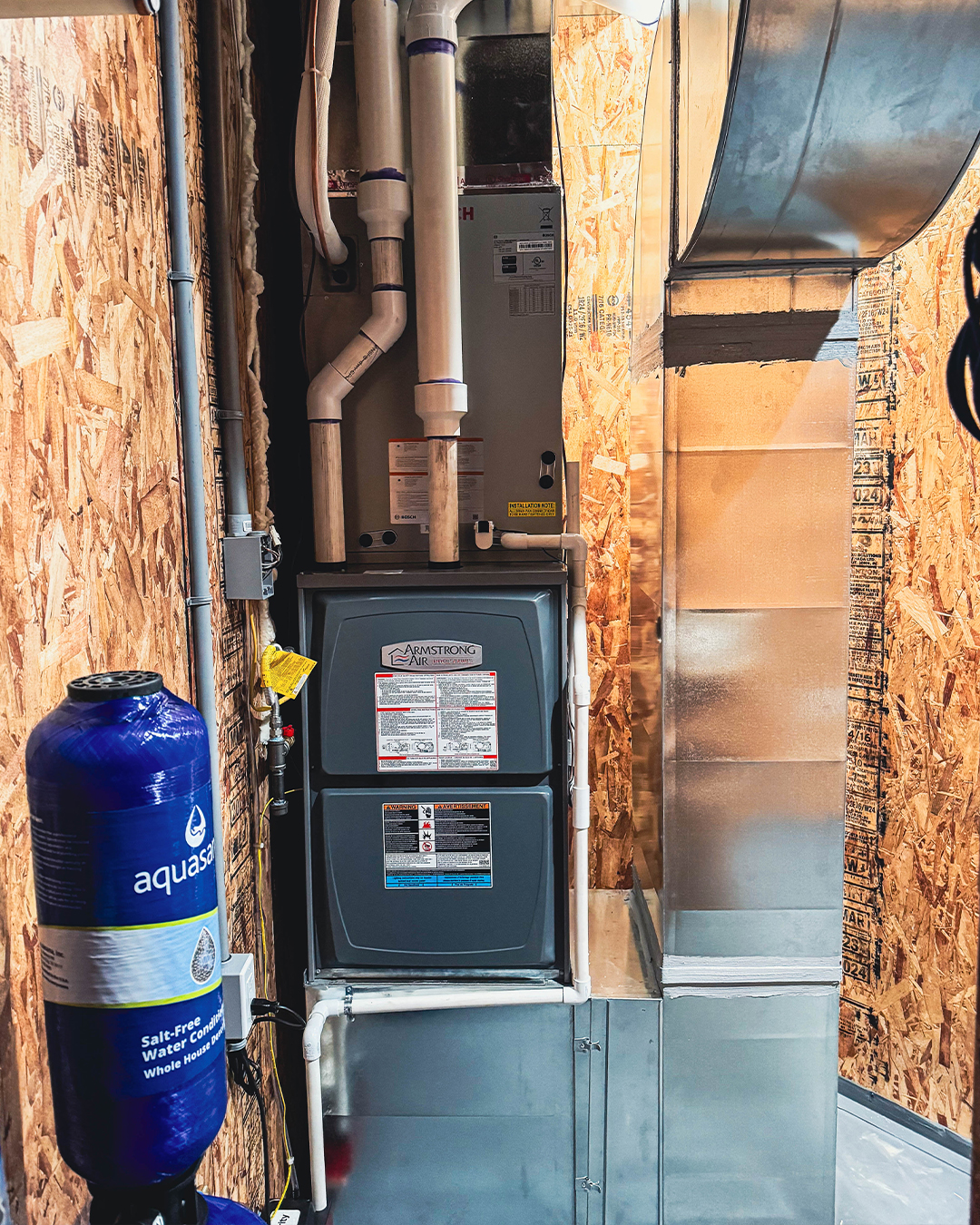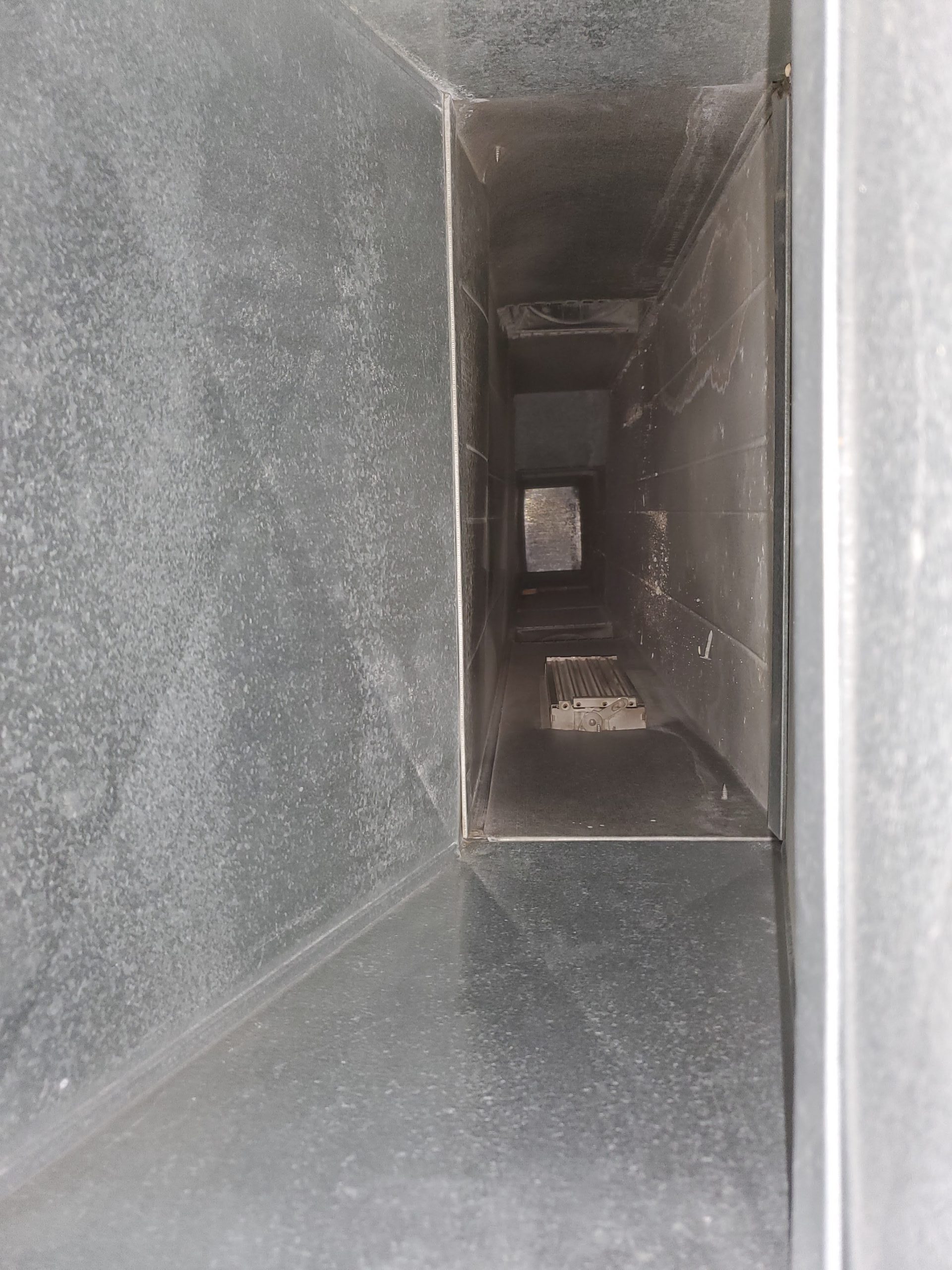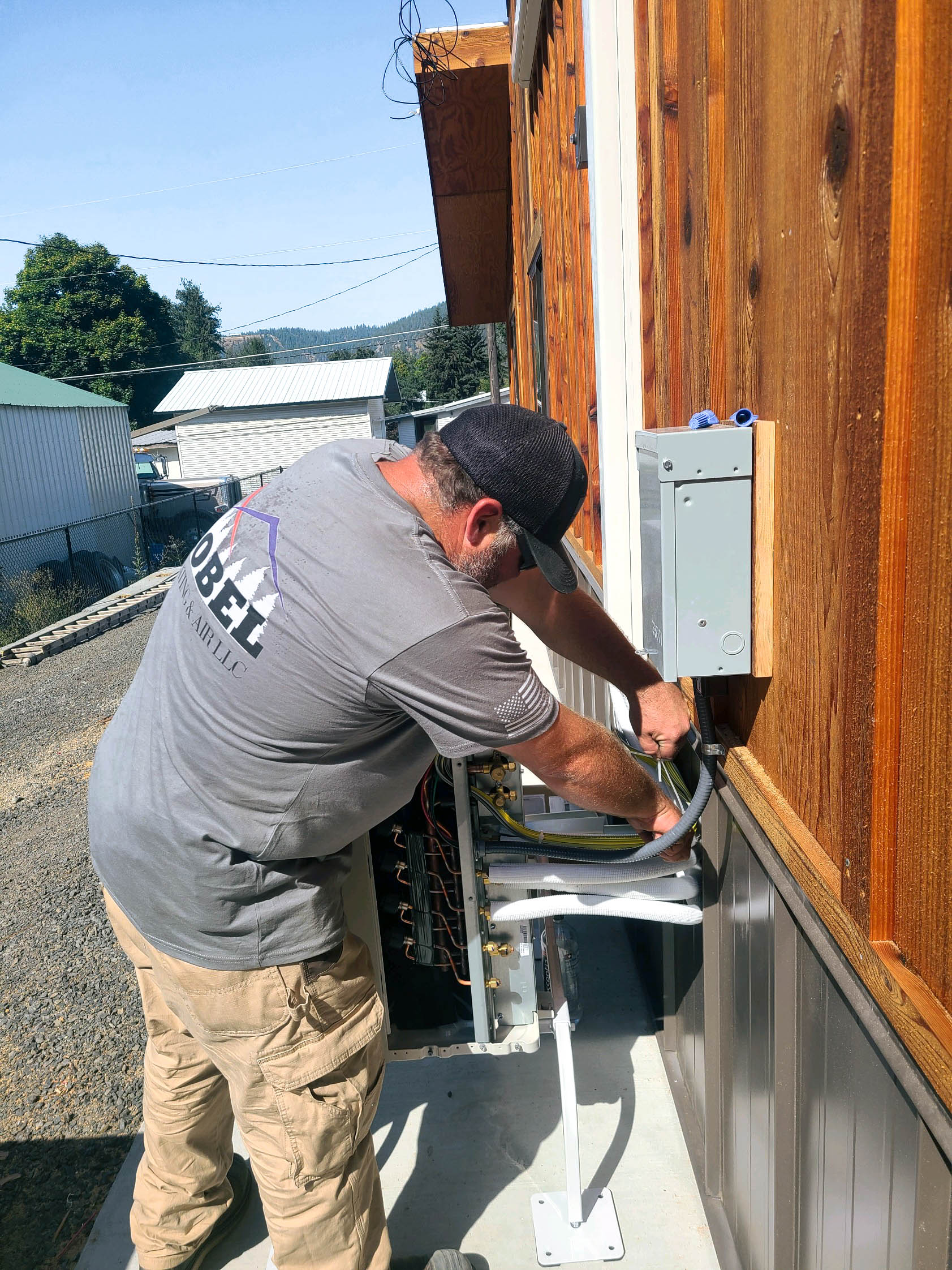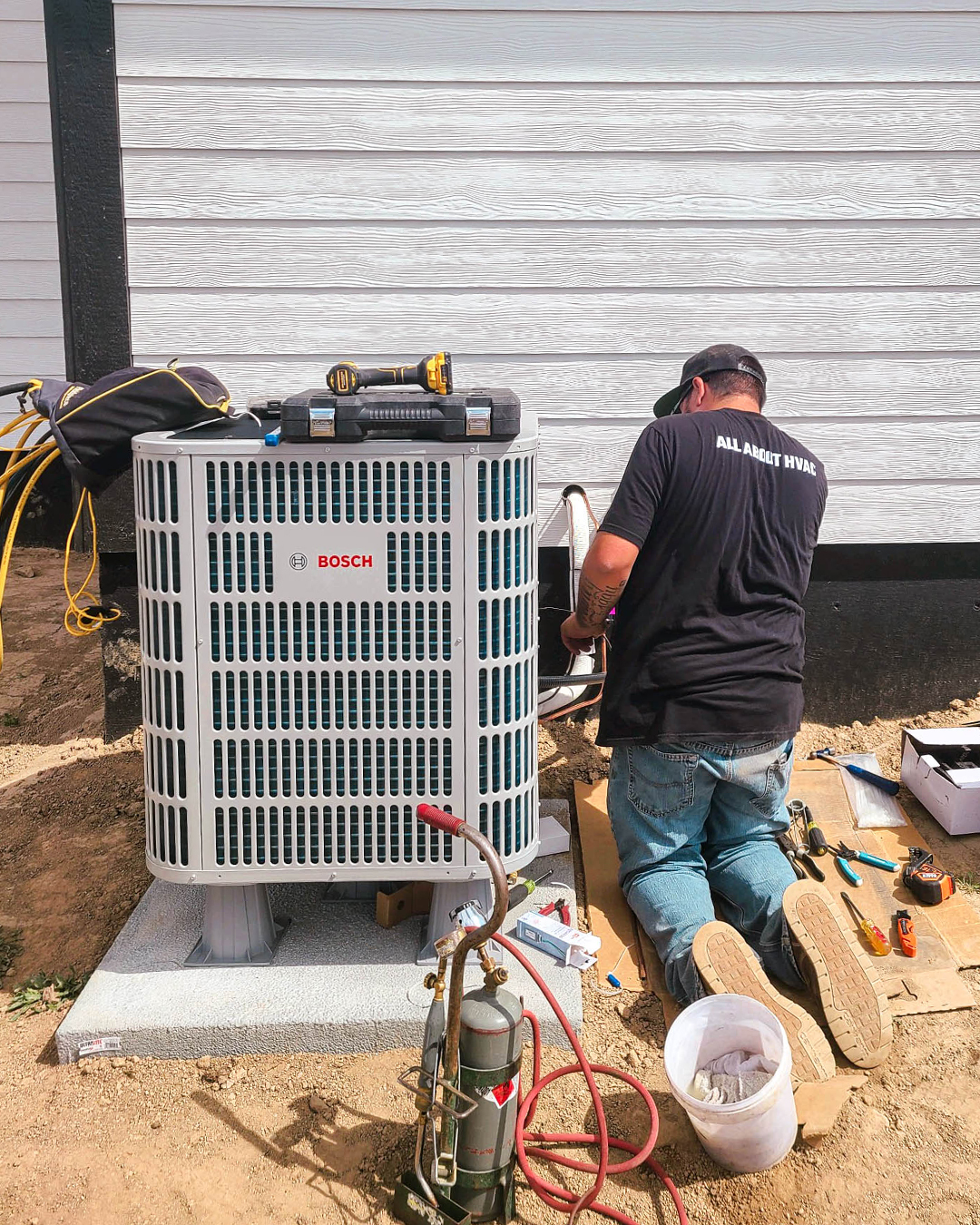Retrofit Installs
Retrofit installations involve upgrading or replacing existing heating, ventilation, and air conditioning systems with newer, more efficient technology or components.
- System Upgrades: Replacing outdated components or units within the existing HVAC system with newer, more energy-efficient models.
- Energy-Efficient Solutions: Installing high-efficiency furnaces, air conditioners, or heat pumps to reduce energy consumption and lower utility costs.
- Ductwork Modifications: Assessing and modifying existing ductwork for improved airflow, distribution, and efficiency.
- Smart Technology Integration: Installing programmable thermostats or smart HVAC controls to enhance system management and energy usage monitoring.
- Air Quality Enhancements: Introducing air filtration, purification, or ventilation solutions to improve indoor air quality.
- Zone Control Systems: Implementing zoning systems to regulate temperature control in different areas of a building separately, improving comfort and energy efficiency.
Heat Pump, Furnace, Ac Installs and Service
These services ensure that heat pumps, furnaces, and air conditioning systems operate effectively, providing optimal comfort and climate control within residential, commercial, or industrial spaces.
- Installation: HVAC companies specialize in the complete installation of heat pumps, furnaces, and air conditioning units. This includes selecting the appropriate system for a property’s specific needs, installing it correctly, and ensuring its efficient operation.
- Service and Maintenance: Regular servicing and maintenance are crucial for the longevity and efficient performance of these systems. HVAC professionals conduct inspections, clean components, and tune systems to ensure they function optimally.
- Repairs: These systems might encounter issues or breakdowns. HVAC companies provide repair services, diagnosing problems and fixing them promptly to restore the functionality of heat pumps, furnaces, or AC units.
- Replacement and Upgrades: Over time, systems might require replacement or upgrades. HVAC companies help in choosing suitable replacements or recommending upgrades for improved efficiency and better performance.
- Consultation and Advice: They also offer consultations, providing advice on the most suitable systems or upgrades based on the property’s requirements, energy efficiency goals, and budget considerations.
Fireplace, fireplace flue installs and service
Services related to fireplaces and flues ensure the safe and efficient operation of these heating systems, providing warmth and ambiance while prioritizing safety and compliance with regulations.
- Installation: HVAC companies specialize in the installation of various types of fireplaces, including wood-burning, gas, or electric models. This involves setting up the fireplace itself, along with the necessary flue or chimney system for proper ventilation.
- Flue Installation: The flue, or chimney, is crucial for safely venting smoke and gases produced by the fireplace. HVAC professionals install and maintain these flue systems to ensure proper functionality and adherence to safety standards.
- Service and Maintenance: Regular service and maintenance of fireplaces and flues are essential for safety and efficiency. HVAC technicians inspect and clean fireplaces, check flue liners for damage or buildup, and ensure proper ventilation to prevent hazards like carbon monoxide buildup or chimney fires.
- Repairs: When issues arise with fireplaces or flues, HVAC companies offer repair services to address problems such as chimney leaks, blockages, damaged liners, or malfunctioning components.
Gas piping
Gas piping refers to the installation, maintenance, and repair of gas lines that supply natural gas or propane to heating systems, water heaters, stoves, dryers, or other appliances that utilize gas for operation.
- Installation: Professionals install gas lines from the main supply to various gas-operated appliances in homes, businesses, or industrial spaces. This involves precise measurements, proper sizing of pipes, and adherence to safety regulations.
- Maintenance: Regular inspection and maintenance of gas lines to ensure they are free from leaks, corrosion, or damage. Maintenance may involve checking for leaks, inspecting connections, and ensuring proper pressure levels.
- Repair: In cases of leaks, damaged pipes, or malfunctions within the gas piping system, HVAC technicians perform repairs to rectify issues and ensure the safe operation of gas appliances.
New Construction Installs
This is the process of installing heating, ventilation, and air conditioning systems in newly built residential, commercial, or industrial buildings. This involves setting up the entire HVAC infrastructure from scratch, tailored to the specific needs and design of the new construction.
- Planning and Design: HVAC professionals collaborate with architects and builders to design an efficient system that suits the building’s size, layout, and purpose. This includes selecting the right equipment and determining the placement of vents, ductwork, and units.
- Installation: Skilled technicians install the HVAC system components, including furnaces, air conditioners, heat pumps, ductwork, vents, thermostats, and other necessary elements according to the approved design.
- Testing and Calibration: Once installed, the system undergoes rigorous testing to ensure proper functionality, airflow, and temperature control. Technicians calibrate settings and make adjustments as needed.
- Inspections and Compliance: Inspections may be conducted to ensure the system meets local building codes, safety regulations, and industry standards.
Duct Cleaning
This is the process of removing dust, debris, contaminants, and mold buildup from the ductwork in heating, ventilation, and air conditioning systems. Over time, ducts can accumulate dust, pet dander, pollen, mold spores, and other particles, impacting indoor air quality and system efficiency.
- Inspection: HVAC professionals inspect the ductwork to assess the level of contamination and identify any issues within the system.
- Cleaning: Using specialized tools and equipment, technicians clean the ducts thoroughly. This might involve methods such as vacuuming, brushing, or agitation to dislodge and remove accumulated debris.
- Sanitization: In cases of mold or microbial growth, technicians might apply treatments or sanitizers to eliminate these contaminants.
- Sealing and Repairs: Technicians may also seal any leaks or repair damaged sections of the ductwork to prevent future contamination and ensure optimal airflow.
Service & Maintenances
Service and maintenance involves regular inspections, upkeep, and fine-tuning of heating, ventilation, and air conditioning systems to ensure they operate efficiently and reliably.
- Inspections: Scheduled check-ups to examine the system’s components, identify potential issues, and assess overall performance.
- Cleaning: Removing dust, debris, or any blockages that may hinder the system’s efficiency, particularly in filters, coils, and vents.
- Tune-ups: Adjusting and calibrating components for optimal performance, including thermostat settings, refrigerant levels, and electrical connections.
- Parts Replacement: Replacing worn-out or faulty parts to prevent system breakdowns and maintain efficiency.
- Testing: Conducting tests to ensure proper functionality, airflow, and temperature control.
- Safety Checks: Verifying the system’s safety features and ensuring compliance with relevant codes and standards.
Manual J Reports
Manual J reports are a crucial component in the HVAC industry, especially for residential installations. They are detailed calculations performed to determine the appropriate heating and cooling loads for a specific building or home. These reports follow the guidelines outlined in the Manual J, published by the Air Conditioning Contractors of America (ACCA).
- Building Size: The square footage, layout, and design of the structure.
Insulation: Assessing the insulation levels in walls, ceilings, floors, and windows. - Climate: Considering the local climate and weather conditions.
- Orientation: The building’s orientation, the number and size of windows, and their direction.
- Occupancy: The number of occupants and their activities within the building.
- HVAC companies use these reports to accurately size heating and cooling equipment. This ensures that the installed systems are neither too small (leading to insufficient heating or cooling) nor too large (resulting in unnecessary energy consumption and costs). Properly sized systems, as determined by Manual J calculations, contribute to energy efficiency, comfort, and cost-effectiveness in heating and cooling residential spaces.
Inspections
Inspections involve thorough assessments of heating, ventilation, and air conditioning systems to evaluate their condition, performance, and overall functionality. These inspections serve several purposes:
- Performance Evaluation: HVAC technicians examine the system’s components, such as furnaces, heat pumps, air conditioners, ductwork, and thermostats, to ensure they are operating efficiently.
- Identification of Issues: Technicians look for any signs of wear and tear, leaks, blockages, or potential problems that might affect the system’s performance or safety.
- Safety Checks: Inspections include checking for gas leaks, carbon monoxide emissions, electrical issues, or any other safety concerns that could pose risks to occupants.
- Efficiency Assessment: Evaluating the system’s energy efficiency to ensure it’s operating optimally, minimizing energy waste and reducing utility costs.
- Maintenance Planning: Based on the inspection findings, HVAC technicians might recommend maintenance, repairs, or upgrades to improve system performance and prevent future issues.

